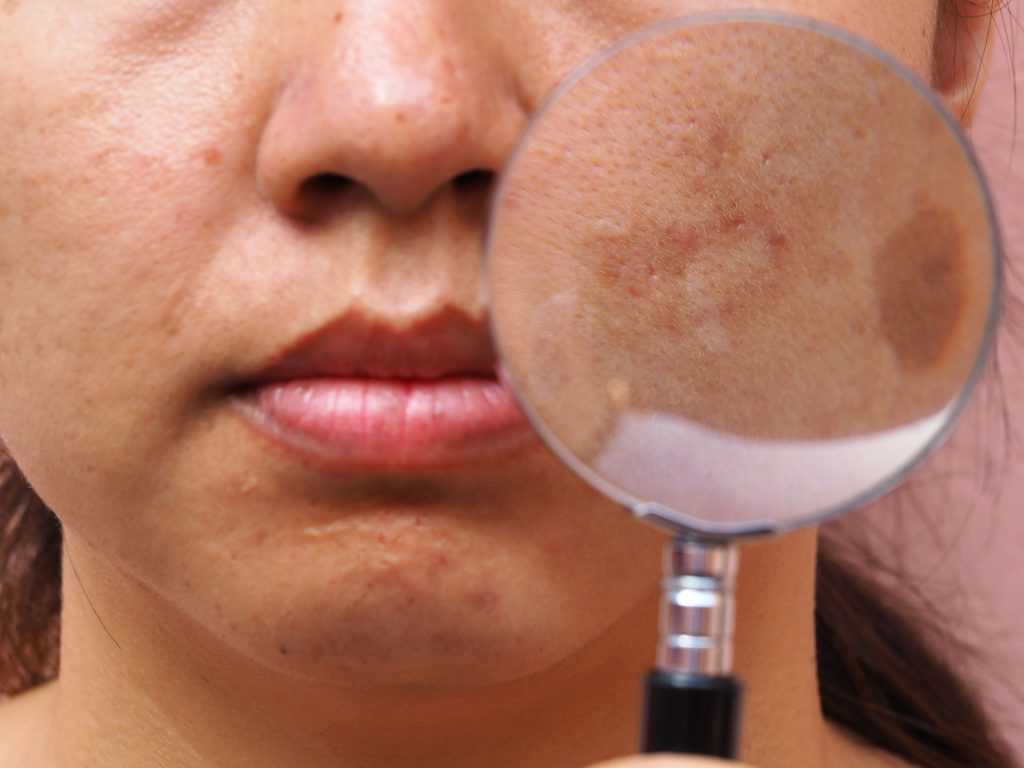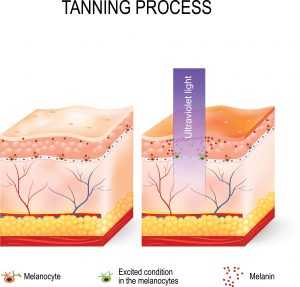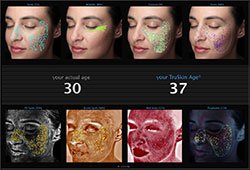Could It be Hyperpigmentation?

Hyperpigmentation is the condition that causes patches of uneven skin tones or irregular dark spots to appear the skin’s surface. These visual areas of concern can be located on or beside normal skin tone where sunlight exposure is identical. It is more common in people with darker complexions but can affect people of all skin tones. Melasma, liver spots, and freckles are some common versions of hyperpigmentation.
Hyperpigmentation is most often caused by an overproduction of melanin. Melanin is responsible for the skin’s coloration, and is produced in the epidermal layer by specialized cells called melanocytes, in a process is called melanogenesis. Melanin is the body’s natural defense against ultraviolet (UV) radiation. Exposure to UV light stimulates melanogenesis, which causes the skin to darken or tan. The direct proportion of melanin found in the skin determines the overall darkness of the skin’s pigmentation. It is important to note that this defense can be quickly overwhelmed by sun overexposure. Some of the negative outcomes of overexposure include sunburn, hyperpigmentation, and possible skin cancer
What Can Cause Hyperpigmentation?
 There are many factors that can cause hyperpigmentation. Here is a list of some of the more common causes:
There are many factors that can cause hyperpigmentation. Here is a list of some of the more common causes:
Sun Damage: Exposure to UV light stimulates melanocytes to produce more melanin. However, the overproduction of melanin can result in irregularities in skin tone, creating areas of uneven coloration.
Inflammation: When the skin gets inflamed and swollen there is an increase in melanin production in the affected area of the skin. This will darken the affected area. The discoloration will often remain after the inflammation has subsided, leaving an uneven skin tone. i
Skin Injuries: Injury to the skin is another common cause of hyperpigmentation. Like with inflammation, skin injuries can cause an excess of melanin production, especially during the healing process. This can be perpetuated if the skin is broken with a cut or abrasion. The aftermath often leaves an area of discoloration or scar. * Acne: Acne breakouts and hyperpigmentation can often be interrelated. When the pores around the hair follicles become clogged, the affected skin area becomes inflamed and swollen. One of the body’s response to an acne outbreak is increased melanin production, which adds a discoloration to the blemish area. The uneven skin tone remains even after the acne outbreak is resolved.
Pregnancy: Often referred to as the Mask of Pregnancy, Melasma is a common form of hyperpigmentation experienced by expectant mothers. Although the reasons why this happens are not completely understood, the hormonal shifts in the body can stimulate more melanocyte activity, thus potentiating hyperpigmentation.iiiii Around 10 to 15 percent of expectant mothers have reported symptoms of melasma.
Birth Control: As with pregnancy, there can be hormonal shifts for patients who take certain birth controls which can excite melanocyte activity. Studies have shown from 5 to 34 percent of women taking oral contraceptives have shown symptoms of melasma. iv
*Ask your doctor or pharmacists about any possible side effects of your medications
Treatments Available for Your Hyperpigmentation
 VISIA Skin Analysis: For clientele that are seeking treatment of their hyperpigmentation at Epiphany Dermatology, we recommend getting a VISIA Skin Analysis. This imaging system helps us to evaluate our clientele’s skin care needs and then identify and customize their treatment regimen accordingly.
VISIA Skin Analysis: For clientele that are seeking treatment of their hyperpigmentation at Epiphany Dermatology, we recommend getting a VISIA Skin Analysis. This imaging system helps us to evaluate our clientele’s skin care needs and then identify and customize their treatment regimen accordingly.
 Skin Care Products: Epiphany Dermatology provides a variety of Dermatology tested and approved lotions that can help treat your hyperpigmentation. Our store also provides sunscreens that are effective against UVA and UVB radiation, which is the only sunscreen that can help prevent hyperpigmentation. Check out Epiphany Dermatology’s Online Store for more information.
Skin Care Products: Epiphany Dermatology provides a variety of Dermatology tested and approved lotions that can help treat your hyperpigmentation. Our store also provides sunscreens that are effective against UVA and UVB radiation, which is the only sunscreen that can help prevent hyperpigmentation. Check out Epiphany Dermatology’s Online Store for more information.
* It is important to be mindful of sun exposure to avoid conditions like hyperpigmentation and skin cancer. Epiphany Dermatology recommends a wearable sun monitoring device from Eclipse Rx.
 Microdermabrasion: Microdermabrasion is a non-invasive treatment that gently remove the outer layer of skin. This is a very effective treatment for hyperpigmentation that leaves the skin smoother and more evenly toned.
Microdermabrasion: Microdermabrasion is a non-invasive treatment that gently remove the outer layer of skin. This is a very effective treatment for hyperpigmentation that leaves the skin smoother and more evenly toned.
Chemical Peels: Chemical Peels is a quick and effective treatment for hyperpigmentation. Our aestheticians apply a chemical exfoliant to the skin. Once the outermost layers of skin peels away the new skin beneath grows in healthier, smoother, and more evenly toned. Epiphany Dermatology provides variety of different chemical peel option to individualize our client’s skin care needs.
Fraxel® Laser Treatment: Fraxel® is a groundbreaking laser treatment that effects the dermal and epidermal layers of the skin, creating a smoother rejuvenated appearance. Fraxel reduces unwanted wrinkles, acne scars, sun spots and discoloration. This makes Fraxel ideal for treating melasma (the mask of pregnancy) and other concerns related to hyperpigmentation.
For more information about how to treat your Hyperpigmentation, please contact Epiphany Dermatology and Medical Day Spa
Hyperhidrosis Treatments are performed by Licensed Aestheticians overseen by Board-Certified Dermatologists at both our Riverside and St. Joseph, MO Locations.
Our Riverside Location:
805 NW Platte Rd., Suite 120
Riverside, MO 64150 | CLICK HERE for Directions
Phone: (816) 205-8120
SEND US AN E-MAIL
Our St. Joseph Location:
805 N 36th St., Suite D
St. Joseph, MO 64506 | CLICK HERE for Directions
Phone: (816) 205-8120
SEND US AN E-MAIL

